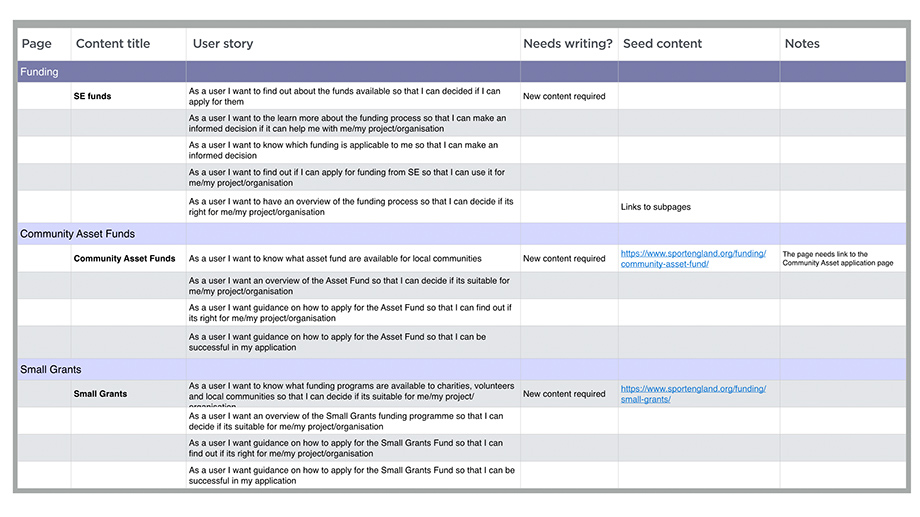Content strategy has been a critical element of many of our clients’ projects, including Bank of England, Financial Ombudsman Service and most recently Sport England.
What is content strategy and why is it important?
Content strategy is the planning, development, creation and delivery of meaningful, user- focused, cohesive, engaging and sustainable content. Simply put, it’s getting the right content, to the right people, in the right place and at the right time.
Sport England
Sport England are an arms-length government body. They work to build an active nation where everyone can take part in sport and physical activity. After a competitive tender process, they chose Cyber-Duck to deliver a user-friendly digital strategy for their substantial website portfolio. We started with a redesign of their main website.
The project’s biggest challenge was that the website was trying to be all things to all users, from giving funding and sharing learnings, to providing guidance and resources. This had resulted in a very content-heavy website, unintuitive navigation and content that lacked a clear purpose and hierarchy.
What is UX content strategy?
Content is no longer a byproduct of website design. As designers, we know good content is fundamental to a good user experience.
Here’s an example, showing a page with poor content design vs a page that’s had the content strategy carefully thought through.
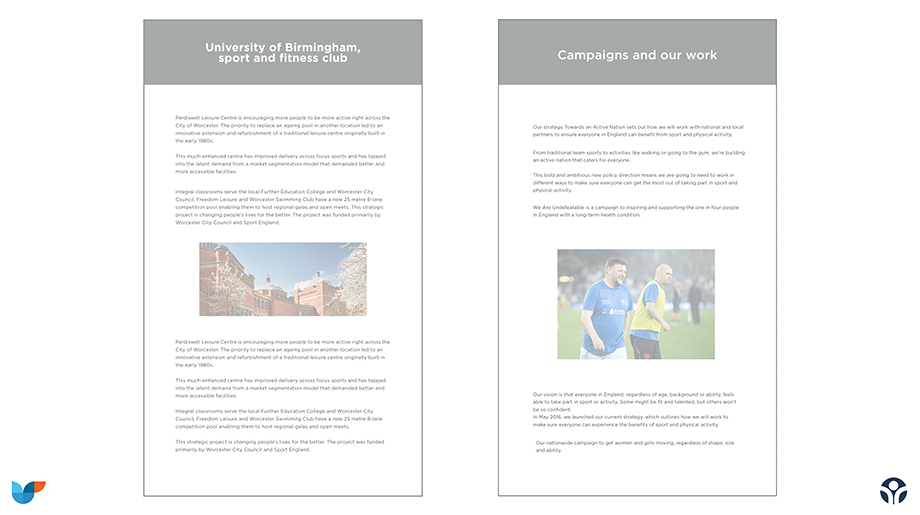
The first example has no structure. It’s got big blocks of text, there are no headings and there’s no hierarchy. This makes the page hard to read.
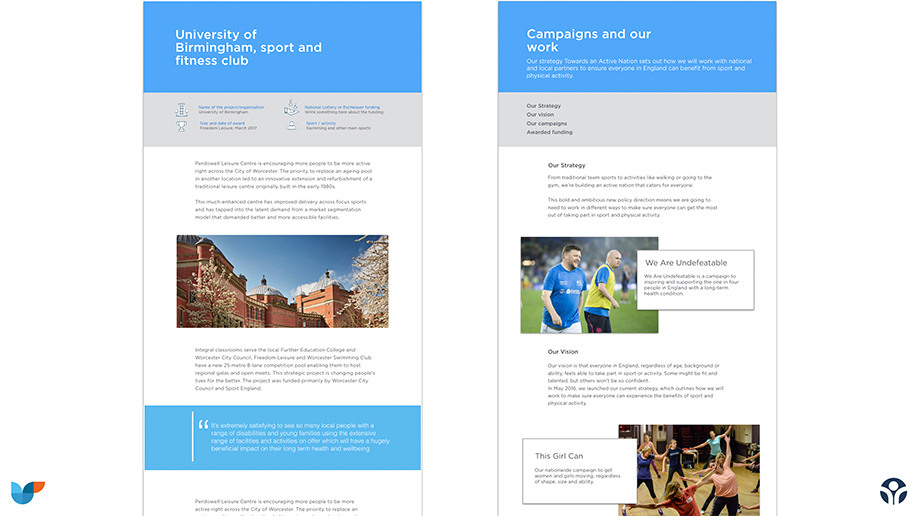
The second example has a clear structure. The sections are broken up with visuals, which make it appealing, engaging and easier to read.
Here are the underlying site structures.
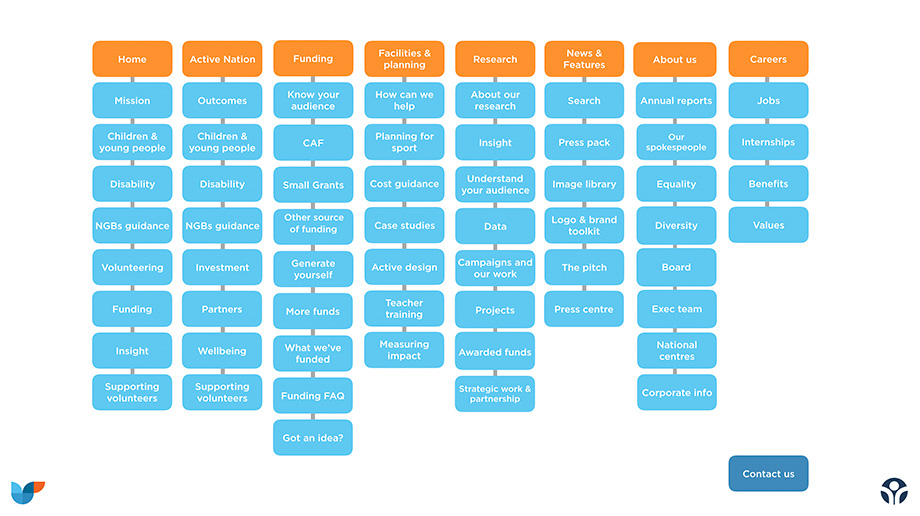
The first example has an overwhelming amount of content. The site also lacked clear sections, hierarchy and groupings. A website with a sitemap like this is hard to navigate – it’s just not user friendly.
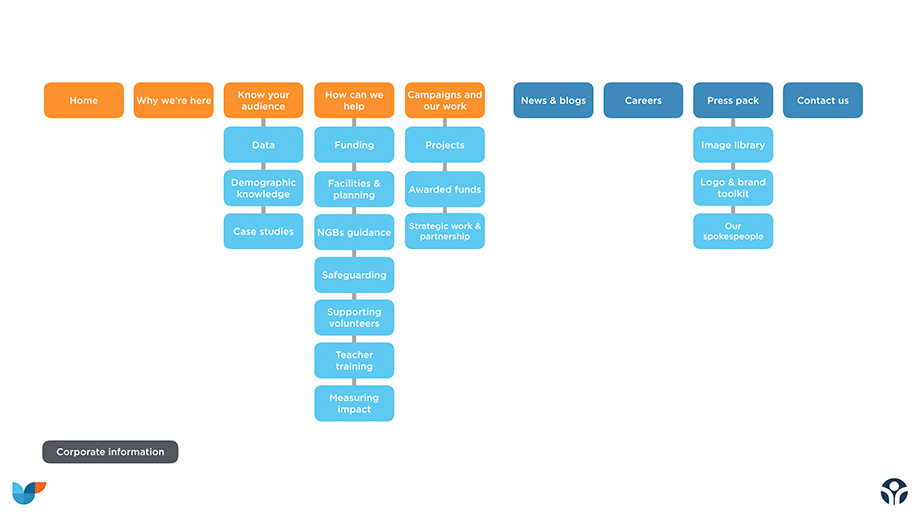
The second example has a primary and secondary menu with logical sections. The content has been stripped back to the essentials, so there’s less clutter. A website with a sitemap like this will be far easier to navigate and use.
The process
Here’s how we tackled the Sport England redesign:
- Goals: We defined the goals of the project with the client
- Workshop: We carried out a UX workshop with Sport England’s team to align stakeholders to the project goals, challenges and pain points
- Persona research: We interviewed a wide range of users to define the persona groups
- Audit: We audited Sport England’s current website
- User stories: Using the audit we defined our user stories for each persona group
- Content mapping: We created a content map for the information architecture
- Sitemap: At the same time, we produced the sitemap
- Content creation: Sport England created the content
- Wireframing: We prioritised areas that needed to be wireframed
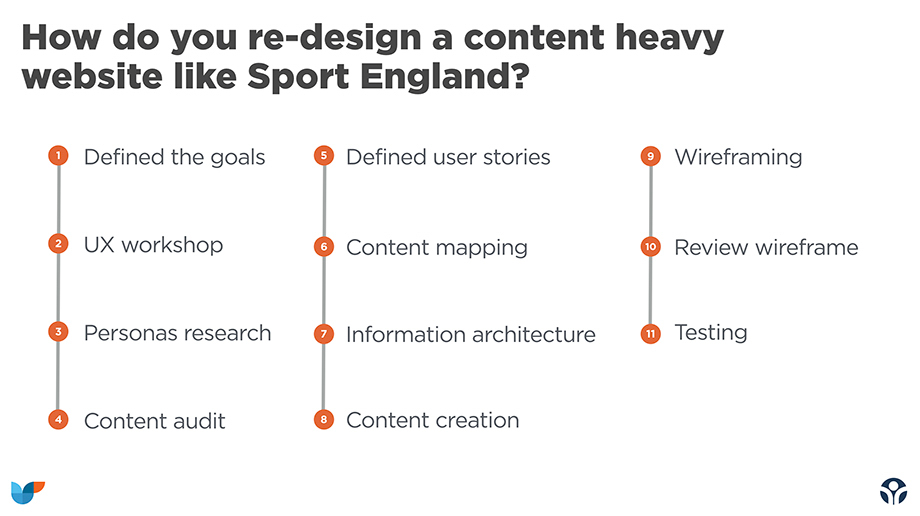
The content audit
The content audit is the first major task after the initial discovery phase. It’s the crucial first step to understanding a content-heavy website.
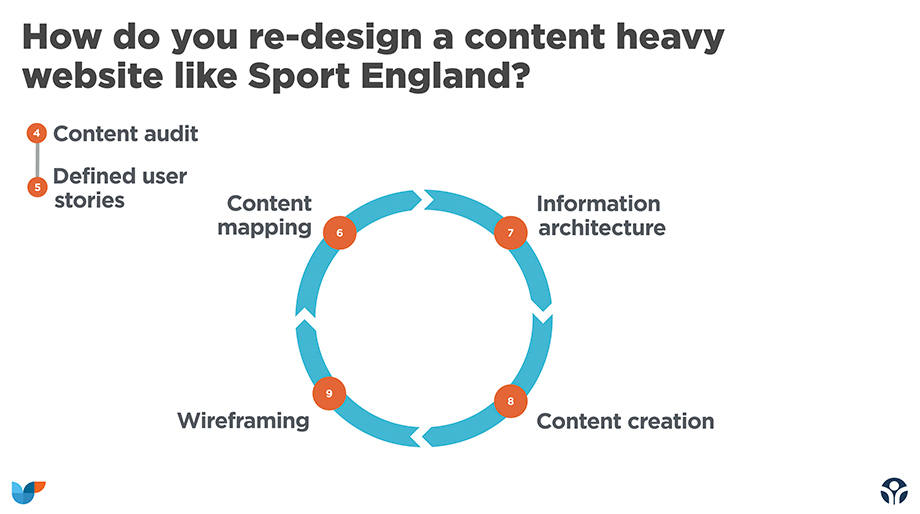
The main purpose of a content audit is to assess every piece of content across an entire website. By doing this, you can identify the best-performing content, see how to repurpose it and identify new content opportunities. It can be a heavy lift, but it needs to be done so you can make informed design decisions.
Here’s how we ran a content audit for the old Sport England website:
- Url: We exported the url for every page of the website to ensure we caught them all
- Data: This helped us identify the highest performing pages
- Category: We categorised each page into key groups
- Quality: We rated the quality of the content and how closely it met user needs
- Statutory requirement: We checked which pages were statutory requirements
- Action: We decided whether the page would be kept, merged or deleted
- Persona group: Each page was assigned to a persona group
- User story: Each page had a user story written for it

The content mapping
The content audit gave us the insight we needed to map the content to the new website and to create the initial sitemap.
Each page on the new website had:
- Page: The name of the page
- Content title: The name of each section on that page
- User stories: A user story for each section in every page
- Content creation: If we needed new content
- Content seed: The source of the content on the current website
- Notes: So we could keep track of discussions and decisions
Wireframing
Each section of the website was wireframed during the sprints. Ideally all wireframing should be done with real content and Lorem ipsum text would be avoided, but it’s not always possible. So we prioritised which sections to wireframe with real content.
Agile methodology
An agile approach was key to the success of this project. We carried out user testing during each sprint so as each section was created, it was tested with real users. That meant we could optimise the sections as they were built. We then incorporated those learnings in future sections.
It also meant we could work closely with Sport England throughout the process. At each stage, we checked in and got their feedback. This agile approach makes the process much more collaborative. It’s also more cost effective for the client because changes and feedback can be incorporated and tested early.
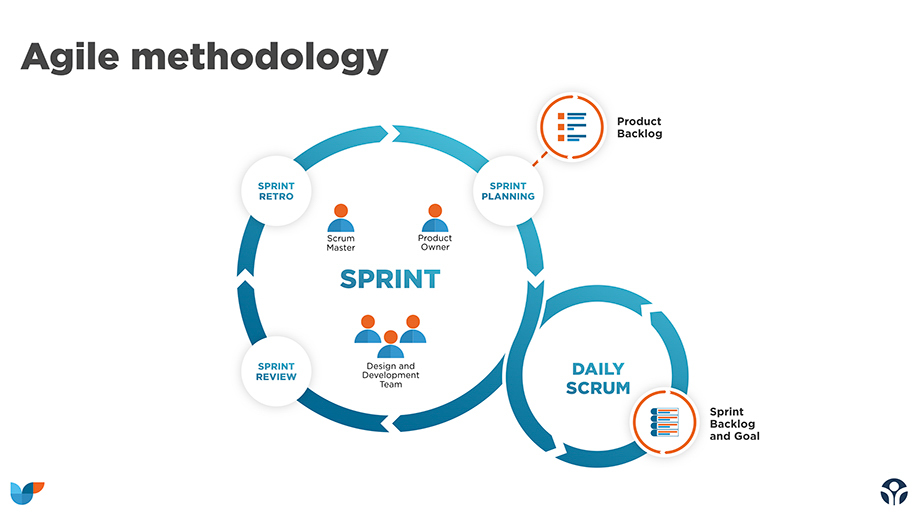
Conclusion
- Content audit: Auditing the content thoroughly needs to be a priority for a content-heavy website redesign
- Teamwork: Daily stand-ups, regular check-ins and sprint planning meetings helped everyone in the project be fully involved and make informed decisions and contributions
- Agile: Working in an agile way supported continuous iterations, close collaboration with Sport England and gave the project the flexibility it needed.
Content strategy was the theme for our last Digital Pond of 2019, focusing on the UX content strategy we developed for Sport England. We gave the talk with Zjan Shirinian, the Head of Editorial and Content at Sport England.
You can watch the full talk below...

